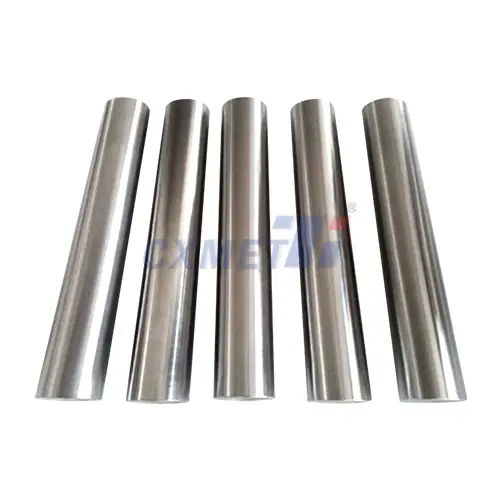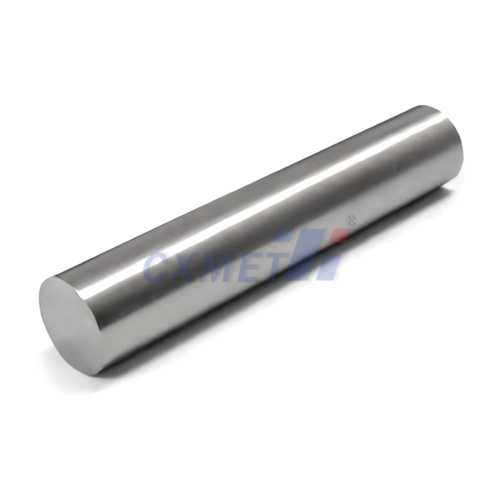- English
- French
- German
- Portuguese
- Spanish
- Russian
- Japanese
- Korean
- Arabic
- Greek
- German
- Turkish
- Italian
- Danish
- Romanian
- Indonesian
- Czech
- Afrikaans
- Swedish
- Polish
- Basque
- Catalan
- Esperanto
- Hindi
- Lao
- Albanian
- Amharic
- Armenian
- Azerbaijani
- Belarusian
- Bengali
- Bosnian
- Bulgarian
- Cebuano
- Chichewa
- Corsican
- Croatian
- Dutch
- Estonian
- Filipino
- Finnish
- Frisian
- Galician
- Georgian
- Gujarati
- Haitian
- Hausa
- Hawaiian
- Hebrew
- Hmong
- Hungarian
- Icelandic
- Igbo
- Javanese
- Kannada
- Kazakh
- Khmer
- Kurdish
- Kyrgyz
- Latin
- Latvian
- Lithuanian
- Luxembou..
- Macedonian
- Malagasy
- Malay
- Malayalam
- Maltese
- Maori
- Marathi
- Mongolian
- Burmese
- Nepali
- Norwegian
- Pashto
- Persian
- Punjabi
- Serbian
- Sesotho
- Sinhala
- Slovak
- Slovenian
- Somali
- Samoan
- Scots Gaelic
- Shona
- Sindhi
- Sundanese
- Swahili
- Tajik
- Tamil
- Telugu
- Thai
- Ukrainian
- Urdu
- Uzbek
- Vietnamese
- Welsh
- Xhosa
- Yiddish
- Yoruba
- Zulu
Are There Any Recycling or Disposal Guidelines for Tantalum Foil?
Tantalum foil, a thin sheet of the rare and valuable metal tantalum, has become increasingly important in various industries due to its unique properties. However, as with many specialized materials, questions arise about proper handling and disposal at the end of its useful life. This blog post will explore the recycling and disposal guidelines for tantalum foil, as well as delve into its properties, applications, and environmental considerations.
What are the unique properties of Tantalum foil?
Tantalum foil possesses a remarkable set of characteristics that make it highly sought after in numerous applications. First and foremost, tantalum exhibits exceptional corrosion resistance, even in harsh chemical environments. This property stems from its ability to form a protective oxide layer on its surface when exposed to air, similar to aluminum but far more robust. This natural passivation makes tantalum foil an ideal choice for applications involving aggressive chemicals or high-temperature environments.
Another standout feature of tantalum foil is its impressive ductility and malleability. Despite being a refractory metal with a high melting point of 3017°C (5463°F), tantalum can be easily shaped and formed into various configurations without losing its structural integrity. This malleability allows for the production of extremely thin foils, some as thin as a few micrometers, which are crucial in miniaturized electronic components and medical implants.
Tantalum foil also boasts excellent thermal and electrical conductivity properties. While not as conductive as copper or silver, its combination of conductivity and corrosion resistance makes it invaluable in certain specialized applications. For instance, in high-performance capacitors, tantalum foil serves as an excellent electrode material, providing stable electrical characteristics over a wide range of temperatures and frequencies.
The density of tantalum is another notable property, with a specific gravity of about 16.6 g/cm³. This high density, combined with its strength and biocompatibility, makes tantalum foil an attractive option for medical implants and radiation shielding applications. In the medical field, tantalum's inertness in bodily fluids and tissues, coupled with its visibility in X-rays, makes it an excellent material for surgical implants and markers.
Lastly, tantalum exhibits remarkable heat resistance. With one of the highest melting points among all elements, tantalum foil can withstand extreme temperatures without degradation. This property is particularly valuable in aerospace and high-temperature industrial applications, where materials must maintain their integrity under severe thermal stress.
How is Tantalum foil used in various industries?
Tantalum foil finds applications across a wide spectrum of industries, each leveraging its unique properties to solve specific challenges. In the electronics industry, tantalum foil plays a crucial role in the manufacture of high-performance capacitors. These capacitors, known for their high capacitance in a small volume, are essential components in mobile phones, laptops, and other portable electronic devices. The thin tantalum foil serves as the anode in these capacitors, allowing for efficient charge storage and release.
The aerospace sector is another major consumer of tantalum foil. Here, it is used in the production of superalloys for jet engine components. The addition of tantalum to these alloys enhances their strength and corrosion resistance at high temperatures, critical factors in the demanding environment of a jet engine. Tantalum foil is also used in the fabrication of rocket nozzles and heat shields, where its high melting point and resistance to thermal shock are invaluable.
In the chemical processing industry, tantalum foil is employed in the construction of corrosion-resistant equipment. Tanks, heat exchangers, and piping lined with tantalum foil can handle aggressive chemicals that would rapidly degrade other materials. This application is particularly important in the production of pharmaceuticals and specialty chemicals, where contamination from equipment corrosion must be avoided at all costs.
The medical field has also found numerous uses for tantalum foil. Its biocompatibility and visibility under X-rays make it an excellent material for surgical implants, such as stents and bone repair plates. Tantalum foil is also used to create thin, flexible markers that can be inserted into the body to guide surgical procedures or track the progress of treatments.
In the semiconductor industry, tantalum foil serves as a diffusion barrier in integrated circuits. As chip manufacturers push for ever-smaller transistor sizes, preventing the migration of atoms between layers becomes increasingly critical. Tantalum's stability and resistance to diffusion make it an ideal material for this purpose, helping to maintain the integrity of microscopic circuit elements.
The nuclear industry also utilizes tantalum foil, particularly in applications requiring neutron absorption. Tantalum has a high capture cross-section for thermal neutrons, making it useful in control rods and shielding materials in nuclear reactors. Its corrosion resistance is also beneficial in the harsh environments often encountered in nuclear facilities.
What are the environmental impacts of Tantalum mining and processing?
The extraction and processing of tantalum, including the production of tantalum foil, have significant environmental implications that warrant careful consideration. Tantalum is primarily obtained from the mineral coltan, which is often mined in ecologically sensitive areas, particularly in central Africa. The mining process can lead to deforestation, habitat destruction, and soil erosion, potentially disrupting local ecosystems and biodiversity.
Moreover, the extraction of tantalum from its ore involves energy-intensive processes and the use of harmful chemicals. The refining process typically requires strong acids and high temperatures, which can result in air and water pollution if not properly managed. The energy requirements for these processes also contribute to greenhouse gas emissions, further impacting the environment.
Water usage is another critical environmental concern in tantalum mining and processing. Large volumes of water are often needed for ore processing and refining, which can strain local water resources, particularly in arid regions. There is also the risk of water contamination from acid mine drainage and chemical spills, which can have long-lasting effects on aquatic ecosystems and human health.
The production of tantalum foil itself, while less environmentally impactful than the mining process, still requires significant energy input. The high melting point of tantalum necessitates substantial energy consumption during the melting and rolling processes used to create the foil. This energy demand, if not sourced from renewable resources, contributes to the overall carbon footprint of tantalum foil production.
Given these environmental concerns, there is a growing emphasis on sustainable practices in the tantalum industry. This includes efforts to improve mining techniques to minimize ecological damage, implement more efficient processing methods to reduce energy and water consumption, and increase the recycling of tantalum from end-of-life products.
Recycling tantalum, including tantalum foil, is particularly important from an environmental perspective. Not only does it reduce the need for new mining operations, but it also conserves energy, as recycling tantalum requires significantly less energy than extracting it from ore. However, the recycling process for tantalum can be challenging due to its use in complex alloys and miniaturized electronic components.
Proper disposal of tantalum foil and tantalum-containing products is crucial to minimize environmental impact. While tantalum itself is not considered toxic, improper disposal can lead to the release of other harmful substances present in the products it's used in. For example, tantalum capacitors may contain other metals or chemicals that require special handling.
In conclusion, while tantalum foil offers remarkable properties that make it invaluable in many applications, its production and use come with significant environmental considerations. As we continue to rely on this versatile material, it's essential to focus on sustainable mining practices, efficient processing methods, and effective recycling programs to mitigate its environmental impact. By doing so, we can continue to benefit from the unique properties of tantalum foil while minimizing its ecological footprint.
At SHAANXI CXMET TECHNOLOGY CO., LTD, we take pride in our extensive product range, which caters to diverse customer needs. Our company is equipped with outstanding production and processing capabilities, ensuring the high quality and precision of our products. We are committed to innovation and continuously strive to develop new products, keeping us at the forefront of our industry. With leading technological development capabilities, we are able to adapt and evolve in a rapidly changing market. Furthermore, we offer customized solutions to meet the specific requirements of our clients. If you are interested in our products or wish to learn more about the intricate details of our offerings, please do not hesitate to contact us at sales@cxmet.com. Our team is always ready to assist you.
References:
1. Cunningham, L. D. (2004). Tantalum recycling in the United States in 1998. US Department of the Interior, US Geological Survey.
2. Bleischwitz, R., Dittrich, M., & Pierdicca, C. (2012). Coltan from Central Africa, international trade and implications for any certification. Resources Policy, 37(1), 19-29.
3. Ayres, R. U., & Peiró, L. T. (2013). Material efficiency: rare and critical metals. Philosophical Transactions of the Royal Society A: Mathematical, Physical and Engineering Sciences, 371(1986), 20110563.
4. Schulz, K. J., DeYoung, J. H., Seal, R. R., & Bradley, D. C. (Eds.). (2017). Critical mineral resources of the United States: economic and environmental geology and prospects for future supply. Geological Survey.
5. Tantalum-Niobium International Study Center. (2021). Tantalum. Retrieved from https://tanb.org/about-tantalum/tantalum
6. U.S. Geological Survey. (2021). Mineral Commodity Summaries 2021. U.S. Geological Survey.
7. Mancheri, N. A., Sprecher, B., Deetman, S., Young, S. B., Bleischwitz, R., Dong, L., ... & Tukker, A. (2018). Resilience in the tantalum supply chain. Resources, Conservation and Recycling, 129, 56-69.
8. Nuss, P., & Eckelman, M. J. (2014). Life cycle assessment of metals: A scientific synthesis. PLoS One, 9(7), e101298.
9. Graedel, T. E., Harper, E. M., Nassar, N. T., & Reck, B. K. (2015). On the materials basis of modern society. Proceedings of the National Academy of Sciences, 112(20), 6295-6300.
10. Papp, J. F. (2014). Recycling metals from industrial waste: Introduction. In Waste Management and Valorization: Alternative Technologies, Apple Academic Press.





